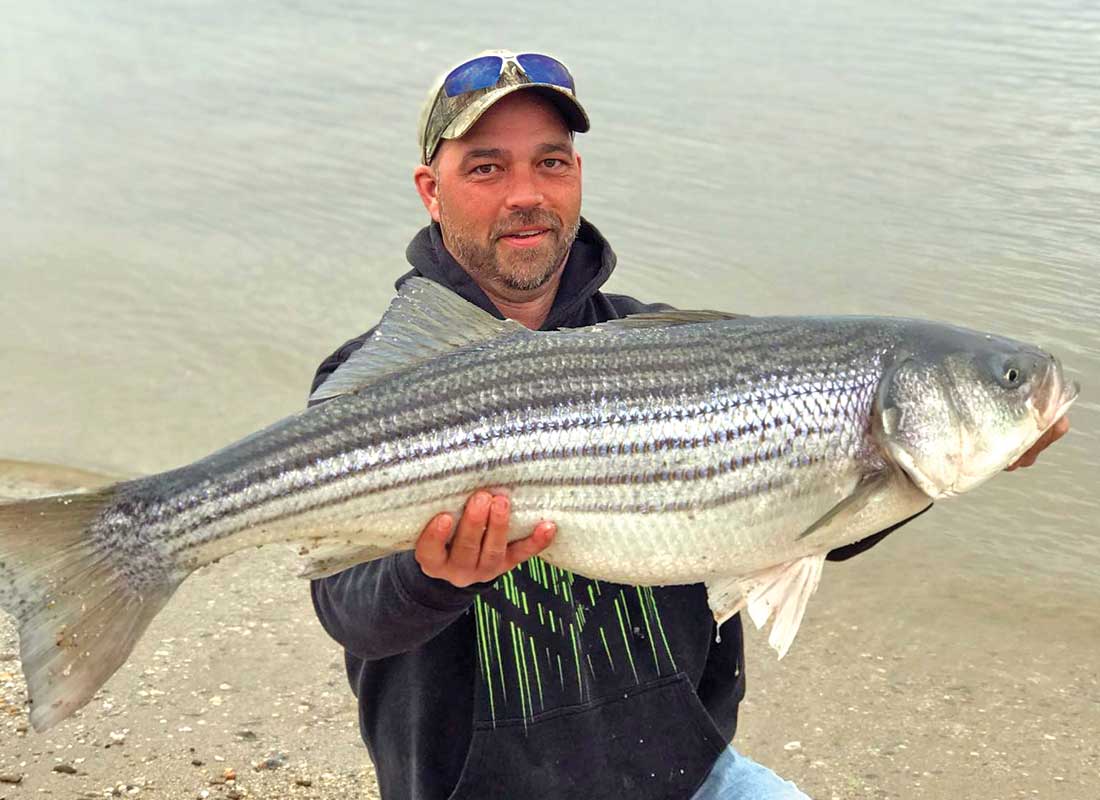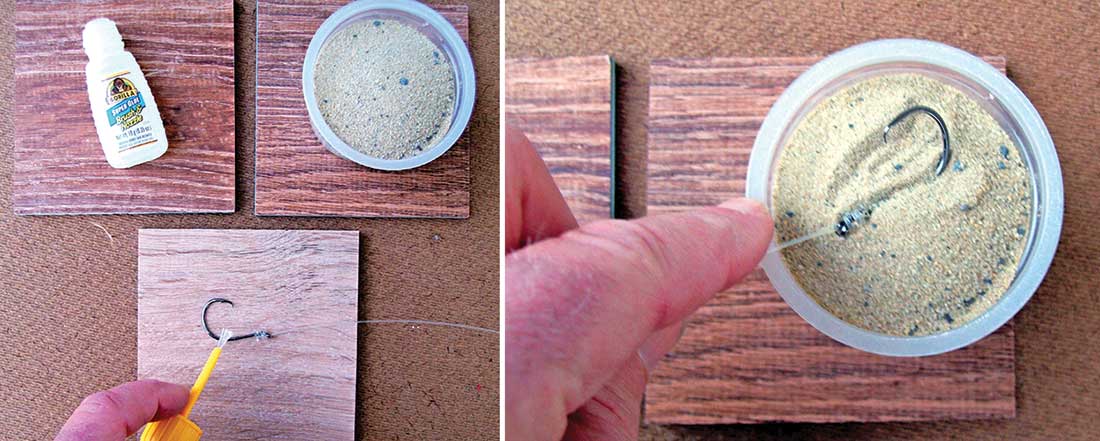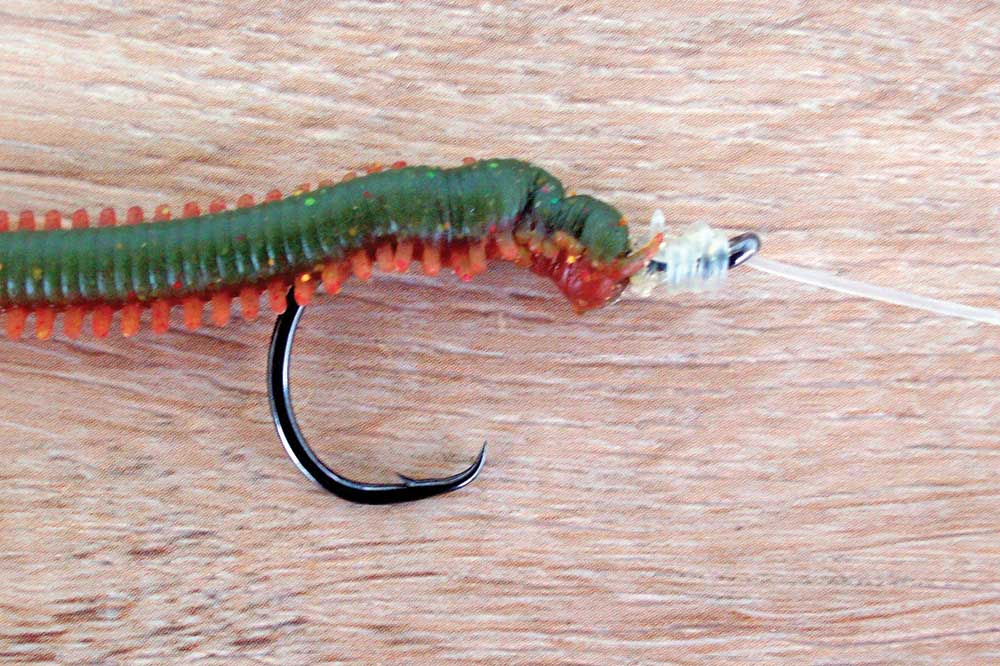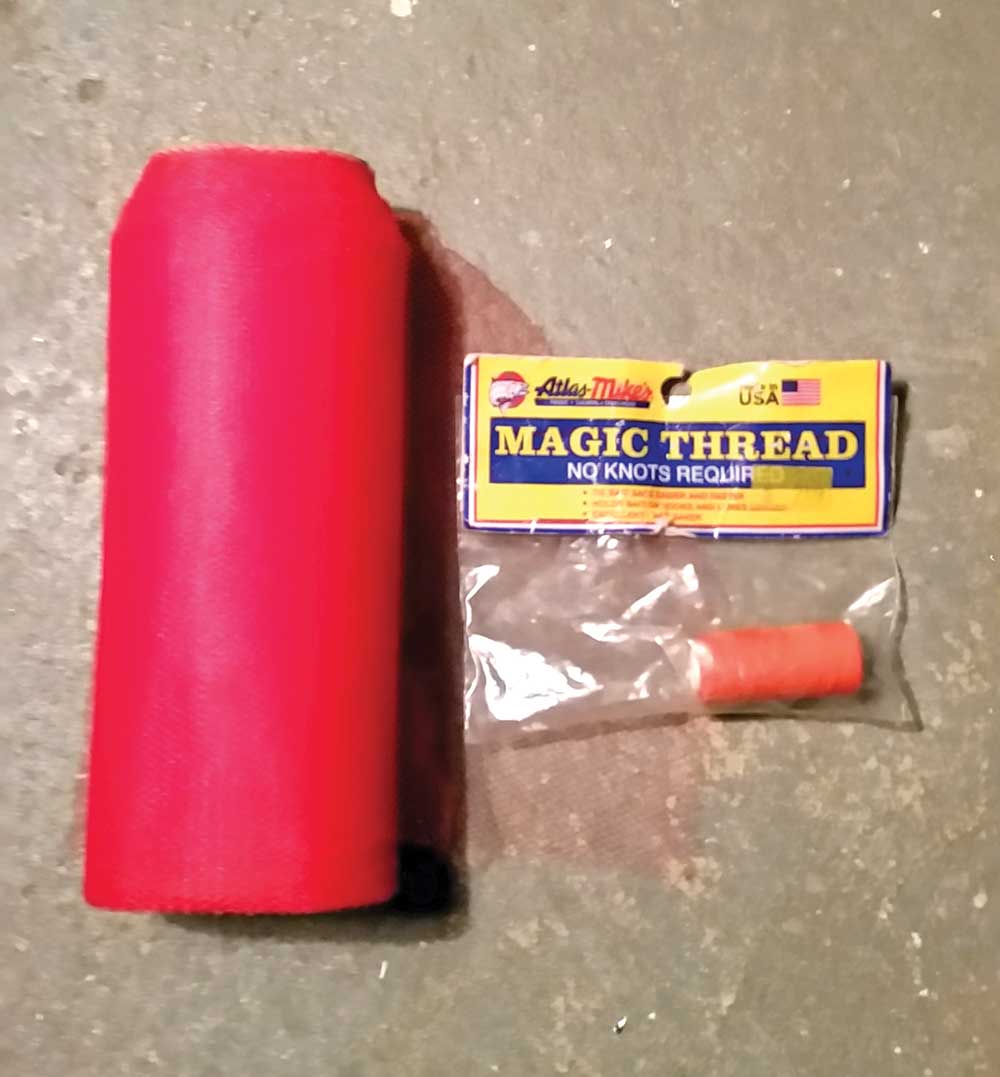
Improvising current gear before the new gear is out for the 2021 circle hook deadline.
New and improved fishing tackle gives today’s saltwater anglers a significant advantage over their peers from just a half-generation ago. Some of that new gear results in more catches; others help to improve catch and release survival rates of our precious stripers. Circle hooks fit nicely into both categories.
Circle hooks have been used for a long, long time, but they’ve become increasingly popular in recent years, even mandatory in some situations. In particular, new inline circle hook requirements – not the offset variety – will be implemented coastwide as of 2021 in an effort to decrease striped bass mortality rates. While a few states have already adopted regional circle hook requirements for striped bass, the rest will need to be in compliance by this time next year, the result being more lip hook-ups and fewer, deadly gut-hooked fish.
Making Adjustments
The use of circle hooks does involve some adjustments in your presentation and hook-set tactics but most changes are straightforward, and the positive end-result is a boost to the ongoing sustainability of our striped bass fishery. Of course, circle hooks do pose some presentation issues, particularly when it comes to using sandworms or bloodworms; the angle of the hook point, the gap between the hook point and the shaft, and the sharp bend in the hook shaft require some agility in maneuvering worms onto the hooks, and up along the shaft in a natural presentation.

My biggest complaint about circle hooks to this point is that it is almost impossible to find one with any kind of baitholder feature, barbs or otherwise. By comparison, traditional j-hooks have always come in baitholder models from a number of manufacturers, and it is my experience that most bait anglers like hooks with baitholder barbs. This design deficiency makes keeping soft baits like expensive bloodworms and sandworms, fresh clams, or even shrimp morsels securely attached to the circles very difficult.
Years ago, I consulted a bit with the folks at Eagle Claw after recommending that they develop and market circle hooks with baitholder barbs. The folks there seemed to appreciate my suggestion and fashioned a new model circle hook with traditional baitholder barbs; they eventually sent me samples in many sizes for me to field-test. I used them when baitfishing with worms, clams, and bunker for spring striped bass, and they worked great. Evidently, the new circle hooks did not sell well and were discontinued for a period of time. However, with the new circle hook requirements just a year out at this point, it’s only a matter of time before inline circle hooks with baitholder barbs are available.
A Sandy Solution
As the hook manufacturers catch up to the need for baitholder barbs on circle hooks, there are a few things that you can do now to make your baitfishing more productive and cost-efficient. One fix is simple but effective. It does not involve notching your hooks to create baitholder barbs; you only need to use some kind of adhesive and a fine, abrasive material like common sand, to craft a primitive but effective way to help hold soft baits on circles.
After applying a simple bonding agent – I like Gorilla Super Glue, which comes with a brush applicator – to the upper half of a circle hook, lightly sprinkle sand or some other gritty substance on the wet adhesive. When the adhesive and light coating of sand dry and bond overnight, the somewhat coarse upper shaft will help greatly to keep soft baits in place.

This tactic is of greatest use when using bloodworms or sandworms but is also beneficial rigging up larger soft baits. Clam balls and bunker chunks can be thread-tied, rubber-banded, or even zip-tied to any kind of hook shaft but without barbs or some kind of anchor to help hold them in place, they are not securely attached. A gritty shaft underneath them is a definite asset.
Just the upper half of circle hook shafts need the conversion to a rough surface. The process needs to be repeated periodically after hooks have been baited, dunked, and weathered because of their exposure to sand, salt and ocean currents. When retreating the hooks with glue and grit, an overnight curing works best. The lower halves of the hook shafts near the hook points need no such treatment; they will still be slick and sharp as ever.
No major changes need to be made in the presentation of your bait rig designs just because of the circles. I still like simple rigs, two 3/0 hooks rigged off dropper loops for worms, a single 6/0 or 7/0 hook rig presented on a dropper loop for bigger baits like clams and bunker chunks. The single most critical adjustment you need to make is in how you react when a fish takes your bait. No need to vigorously set the hook as with j-hooks; just reel in straight and steady. The hook is designed to do the work, and almost always catches the fish in the corner of its mouth.
Improvised baitholder inline circle hooks can be used by boat, beach, and dock anglers to great advantage (like saving money on bait not lost because it slipped off a smooth hook shaft and in more fish caught due to the soft baits sticking on hook shafts more securely!) Eventually, I expect we’ll see more on the “baitholder” front when it comes to circle hook design leading up to the 2021 regulatory change; but for this spring as you make the transition, I hope this simple hack helps as you’re circling up those bayshore bloodworms!
| BLOODWORM BAG |
|---|
|
The materials used to make the bag include, tulle which can be purchased at any fabric store, and the “magic thread” or elastic found at local tackle shops. “The process is pretty simple,” said Chris, who explained it. “Cut a piece of mesh, put your bloodworm in the center, bring the four corners together and twist like a loaf of bread. With six or seven wraps of the magic thread in opposite directions, no knot is required. Trim the excess mesh from the top and you’re ready to go.” |
 One popular spring striper rig used by surfcasters along the Delaware River is the worm bag, another great hack for rigging circle hooks from shore that’s especially effective for deterring bait stealers. “This is pretty much a required practice for the river in April or you’ll just feed the perch all day long,” explained New Jersey angler Chris Orange. From April 1 through May 31, fishermen in New Jersey are required to use non-offset circle hooks when fishing natural baits in the Delaware River and tributaries from U.S. Route 1 Bridge to the Salem River. During that spawning period, striped bass harvest is prohibited.
One popular spring striper rig used by surfcasters along the Delaware River is the worm bag, another great hack for rigging circle hooks from shore that’s especially effective for deterring bait stealers. “This is pretty much a required practice for the river in April or you’ll just feed the perch all day long,” explained New Jersey angler Chris Orange. From April 1 through May 31, fishermen in New Jersey are required to use non-offset circle hooks when fishing natural baits in the Delaware River and tributaries from U.S. Route 1 Bridge to the Salem River. During that spawning period, striped bass harvest is prohibited.
